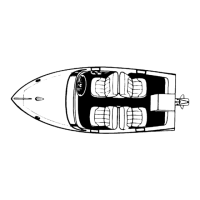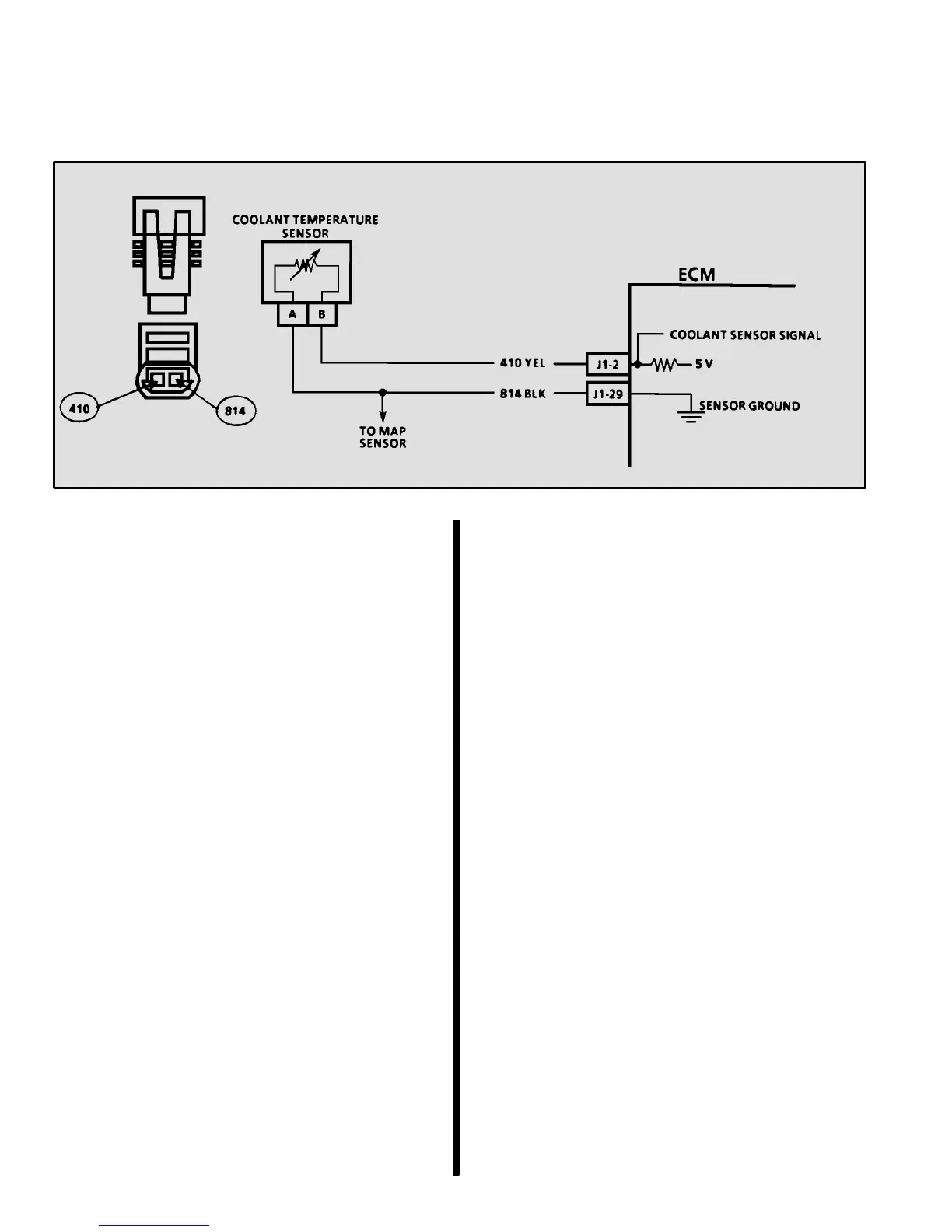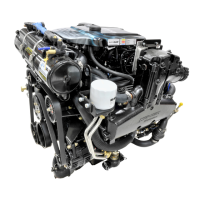90-823225--1 10965E-88 - ELECTRONIC FUEL INJECTION (MULTI-PORT AND THROTTLE BODY)
Diagnostics-Without Scan Tool
Code 14: Engine Coolant Temperature (ECT) Sensor Circuit (Non-Scan)
(1 of 2)
ENGINE
ENGINE
CIRCUIT DESCRIPTION:
The Engine Coolant Temperature (ECT) sensor uses
a thermistor to control the signal voltage to the ECM.
The ECM applies a voltage on CKT 410 to the sensor.
When the engine coolant is cold, the sensor (thermis-
tor) resistance is high; therefore, the ECM will see
high signal voltage.
As the engine coolant warms, the sensor resistance
becomes less, and the voltage drops.
TEST DESCRIPTION:
Number(s) below refer to circled number(s) on the
diagnostic chart.
1. This step checks if there is a problem with the
ECM and wiring or if the problem is the coolant
sensor.
2. Check the harness terminals thoroughly for loose
connection. If the resistance or the coolant sen-
sor is monitored, the resistance should steadily
decrease as the engine coolant warms up. The
resistance reading would stabilize when the ther-
mostat opens.
3. This step will isolate the problem to CKT 410 (5
volt reference) or to the sensor ground.
4. This step identifies if CKT 410 is open or shorted
to ground.
DIAGNOSTIC AIDS:
An intermittent problem may be caused by a poor or
corroded connection, rubbed through wire connec-
tion, a wire that is broken inside the insulation, or a
corroded wire.
Any circuitry that is suspected as causing the inter-
mittent complaint should be thoroughly checked for
backed-out terminals, improper mating, broken
locks, improperly formed or damaged terminals, poor
terminal-to-wiring connections, corroded terminals
and/or wiring, or physical damage to the wiring har-
ness. After repairs, clear codes following “Clearing
Codes” in “ECM Self-Diagnostics.” Failure to do so
may result in codes not properly being cleared.
Check harness routing for a potential short to ground
in CKT 410. See “Intermittents” in “Troubleshooting.”
IMPORTANT: If replacing the ECT, tighten hand
tight plus 2-1/2 turns maximum.

